Development booms on outskirts of Dallas-Fort Worth as sprawl swallows small towns
Leah Combs and her husband kept moving north.
They lived in Dallas when they first got married before they moved to McKinney. Then they needed space for their growing family, so they left for once-rural Celina. Now, the town they call home has more than doubled in size in the past few years.
As she sat outside, her sons fishing at a neighborhood pond, there’s still a sense of living in the country — if you can look past the rows of houses surrounding the outdoor space.
If it gets any more populous, it may be time to move again.
“You step outside this neighborhood, and you’re like, ‘Oh, there’s a lot of construction going on,” Combs said.
Her neighborhood is already well established, but throughout the area and in other pockets of the Metroplex new homes are going up on what were once miles of open land. And people are coming, as they, like Combs, move out of the city in search of space and savings.
Texas is home to four of the nation’s 10 largest cities: Houston, San Antonio, Dallas and Austin. Georgetown, Kyle, Leander and Little Elm are among the five fastest growing cities with over 50,000 people.
But as big cities boom, smaller cities and towns on the edges are growing just as fast, if not faster.
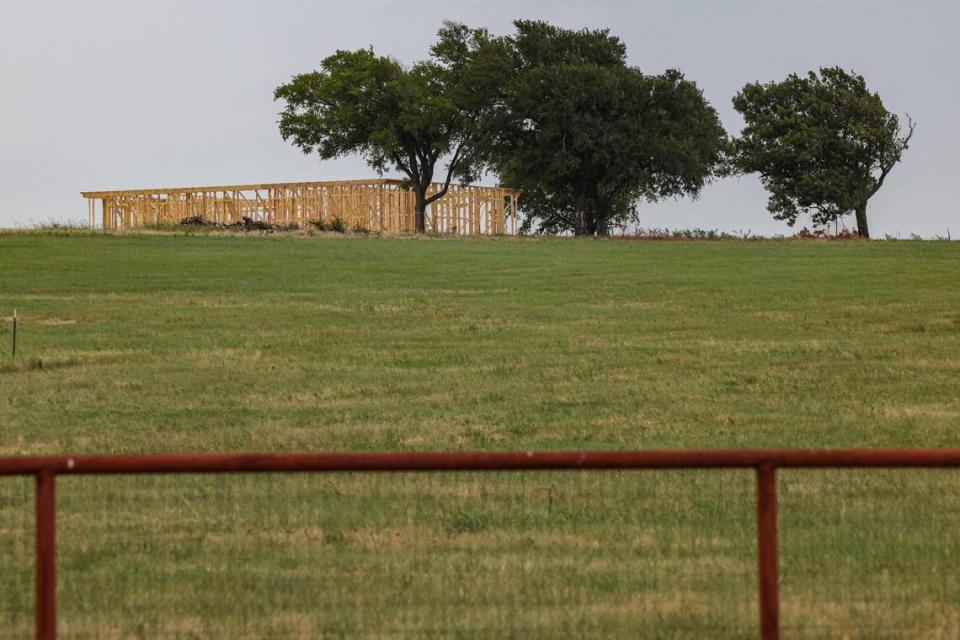
“People are still flocking to Texas and particularly Fort Worth in the surrounding areas,” said Bart Calahan, president of the Greater Fort Worth Association of Realtors.
The area is going to keep growing, he predicted, and as more people come, housing availability and accompanying infrastructure and services like roads and schools try to keep up.
The development being seen throughout North Texas is something Combs is living firsthand.
“It just keeps getting bigger, and they’re trying to keep up with it,” Combs said.
She pointed out newly built utility poles visible in the horizon. Smoke from a nearby concrete plant can sometimes be seen, she said. There’s also a new H-E-B planned in Celina.
“It’s all supposed to be right around here, and as much as we’d love to not be right in the heart of it, it’s hard to avoid,” Combs said. “It’s growing so fast.”
Living on the edges of a growing North Texas
Celina was a draw for Combs in 2016, when her home was purchased, because the family could get a home practically in Prosper for thousands less than living in the city itself. She liked the small town feel in the outskirts of the busiest parts of the Metroplex. The town north of Frisco is as close to Oklahoma as it is to downtown Dallas.
But now everyone is feeling the growth. Her kids’ sports teams are indicative of that, as more people move to the area from the West Coast, she said. The town’s population doubled between April 2020 and July 2022, according to a Star-Telegram analysis of U.S. Census Bureau figures.
And it’s not just Celina that’s swelling. Josephine in Collin and Hunt counties has grown by 226% in the same time period. Godley has grown by 84% and Haslet by 74%.
Krum has seen about 570 new people — 10% growth — between April 2020 and July 2022. A lot of the growth is outside the city limits, said Nick Vincent, the finance director and city administrator for Krum.
The rural atmosphere, access to good schools and affordability make it an attractive destination, he said.
There is still separation between Krum and Denton, a city of more than 150,000 just nine miles away, but Vincent suspects the undeveloped land between the two communitie and they’ll blend seamlessly.
“When you’re in Denton, you’re in Krum, very much similar to the way Louisville and Carrollton and Corinth — when you leave one city and go to the next, you really don’t know when you’re in that next city,” he said. “There will definitely be that time, and it will come faster than you think, probably.”
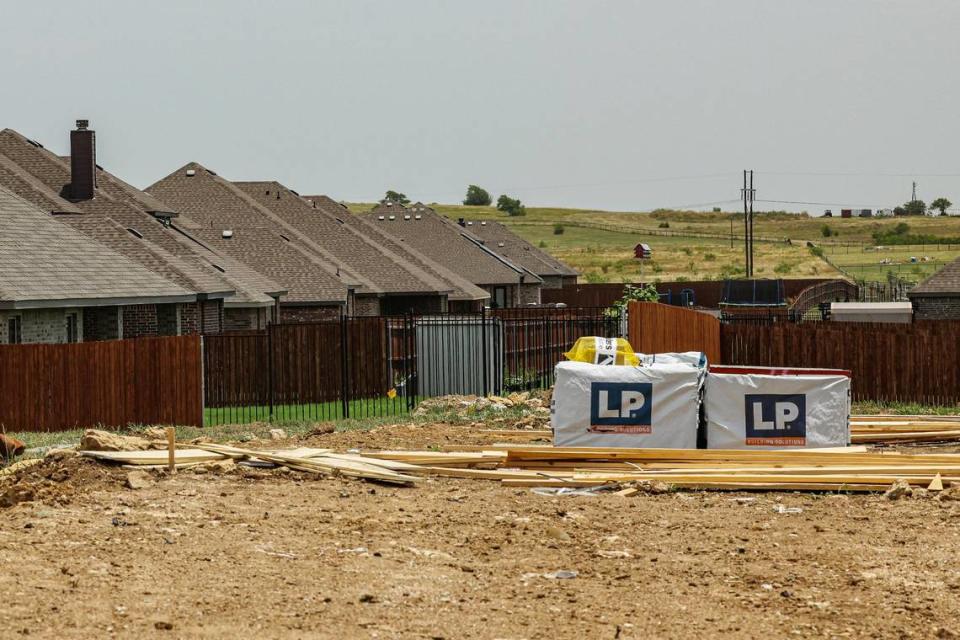
Rising mortgage rates have dampened some of the demand for housing, but it remains strong, said Don Allen, a North Texas developer and past president of the Greater Fort Worth Association of Builders.
Most tracts of land within more urban areas have already been built out, so redevelopment there tends to focus on more dense housing. For buyers wanting traditional, detached single family homes, the growth is outward from Fort Worth to the north, west and southwest, as well as to the north, south and east of Dallas, Allen said.
“It’s just where we can build new lots to build new homes,” he said, when asked what’s driving people to the Metroplex’s perimeter.
That’s not to say there’s not demand for more housing in the interior of already built out cities and towns.
“The demand is for new multi-family, the demand is for new in-town denser development, the demand is for suburban detached development,” Allen said. “We need all of these housing components to address the demand of people that need to buy houses. The answer is not one answer, the answer is we need all of them.”
‘It was just our turn to expand’
As Lisa Palomba sees it, it was Josephine’s turn.
The town sits 25 miles east of Plano and has seen its population jump by about 4,813 people between April 2020 and July 2022, according to census estimates. Some residents whose family have lived in the area for decades don’t like the growth and development that comes with it, said Palomba, the city administrator.
“I don’t blame them,” she said. “I understand. I lived in Rockwall when Rockwall was teeny-tiny, and I get it. But what are you going to do? Once those suburban rings start to expand, it’s really, really hard to stop.”
Affordability, particularly for first time homebuyers, and a transition to working from home during the COVID-19 pandemic have driven people to the community, she said. But beyond that, sometimes the growth just catches up to you.
“We were just positioned in a place where it was just our turn to expand,” Palomba said.
Living on the edges of more built out communities does come with challenges. Developing land means constructing roads, grocery stores and other necessities for residents, which brings traffic and noise.
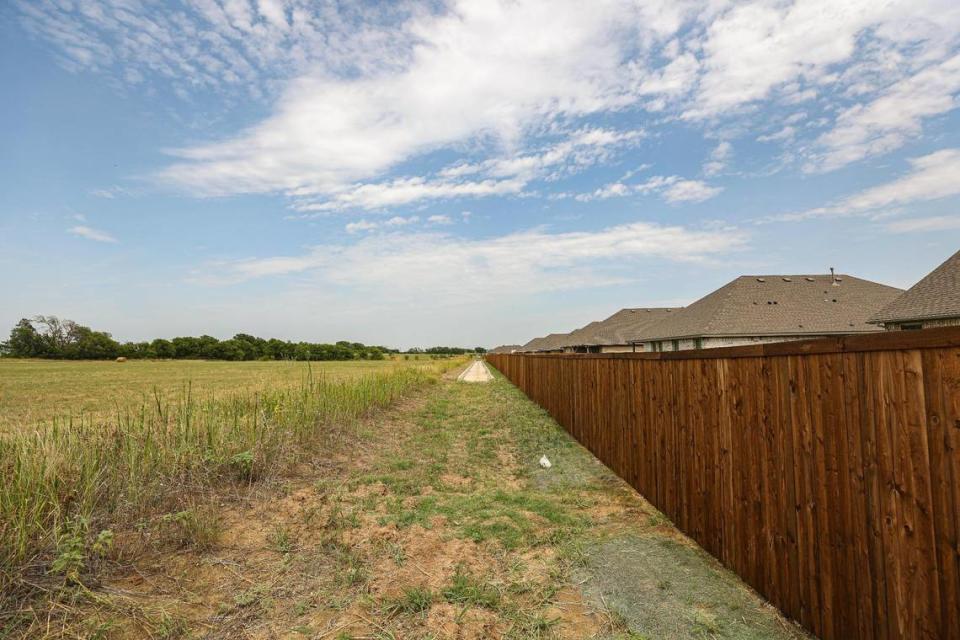
“The only con is giving the the cities time to build the infrastructure,” said Calahan, with the Greater Fort Worth Association of Realtors. “The water, the wastewater, electricity, internet. Giving them time to keep up and catch up.”
Josephine has been grappling with just that in recent years, and recently approved its first comprehensive land use plan, to set guidelines for development, such as where green space should be retained and establishing potential commercial districts.
Then there’s the transitioning from a volunteer fire department, getting roads expanded and attracting commercial businesses — efforts that are still in the works.
One business they’d like: A grocery store in town. The closest one is about eight miles away, Palomba said.
“We’re small and we can’t offer a lot of incentives at this time, but if there’s somebody out there who would like to invest a little bit in Josephine, we are ready to talk to them,” she said.
From a transportation standpoint, you’d want as much of the development as possible to be filling in the Dallas-Fort Worth-Arlington area since infrastructure is already established, said Mike Morris, director of the North Central Texas Council of Governments.
“The real problem is when the suburban grown occurs in the areas where we don’t have infrastructure, and then because of safety and congestion and reliability, and real issues like we have — police and fire can’t get on the other side of the railroad tracks because there’s no grate separation — then it becomes a transportation problem, and that’s the situation that we’re in, in a lot of the region,” Morris said.
The region is growing by an estimated million people every seven years and the population center continues to trend north, he said.
“Growth clearly and the pressure on housing and housing costs clearly is a real problem,” Morris said.
There’s also the commute to work, for those whose jobs require they go into the office in person.
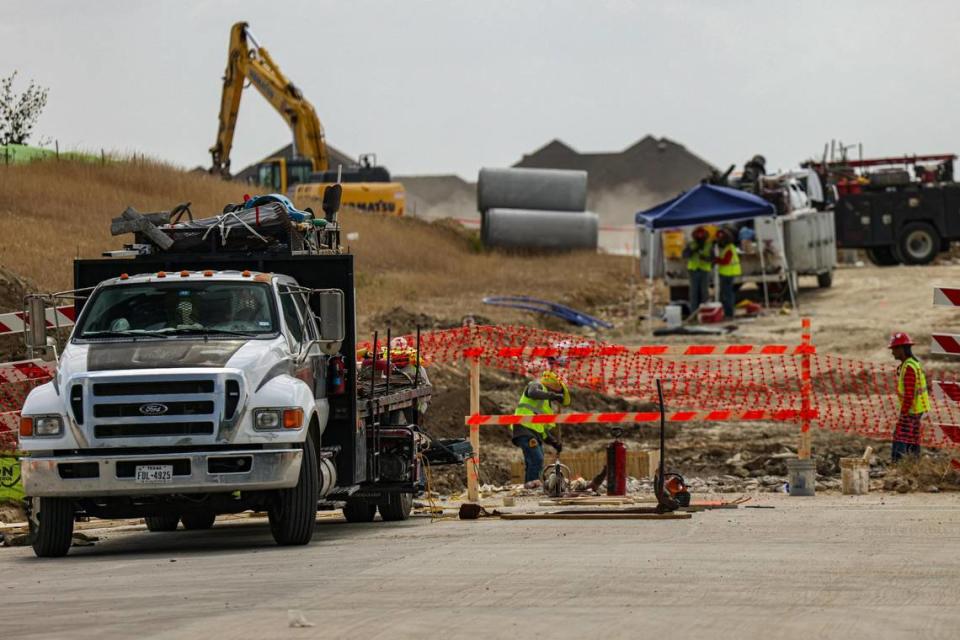
“If I’m not having to do like an hour commute on a daily basis, that should still be fine,” said Askay Dagat, who lives in Celina but sometimes drives to Plano for work. “But I think for Texas standards, 45 minutes is pretty much business as usual.”
Dagat’s never lived a particularly rural lifestyle and is comfortable with the development, given he was able to get a bigger house at a more affordable price.
“We’ll have to embrace the change,” he said.
Schools also have to keep pace with the growth.
“Even with school districts, giving them time to build schools and get quality teachers there is a challenge at times, because they just grow so fast,” Calahan said.
One reason people my move to the outskirts, rather than the city is the quality of schools, Morris said.
Those without school-aged children, residents who are younger or older, they often like the uptown feel because they can live and work in the same area and easily access restaurants and entertainment. The middle-years when people have families, they’re looking at where they can get the best school district in an area they can afford, Morris said.
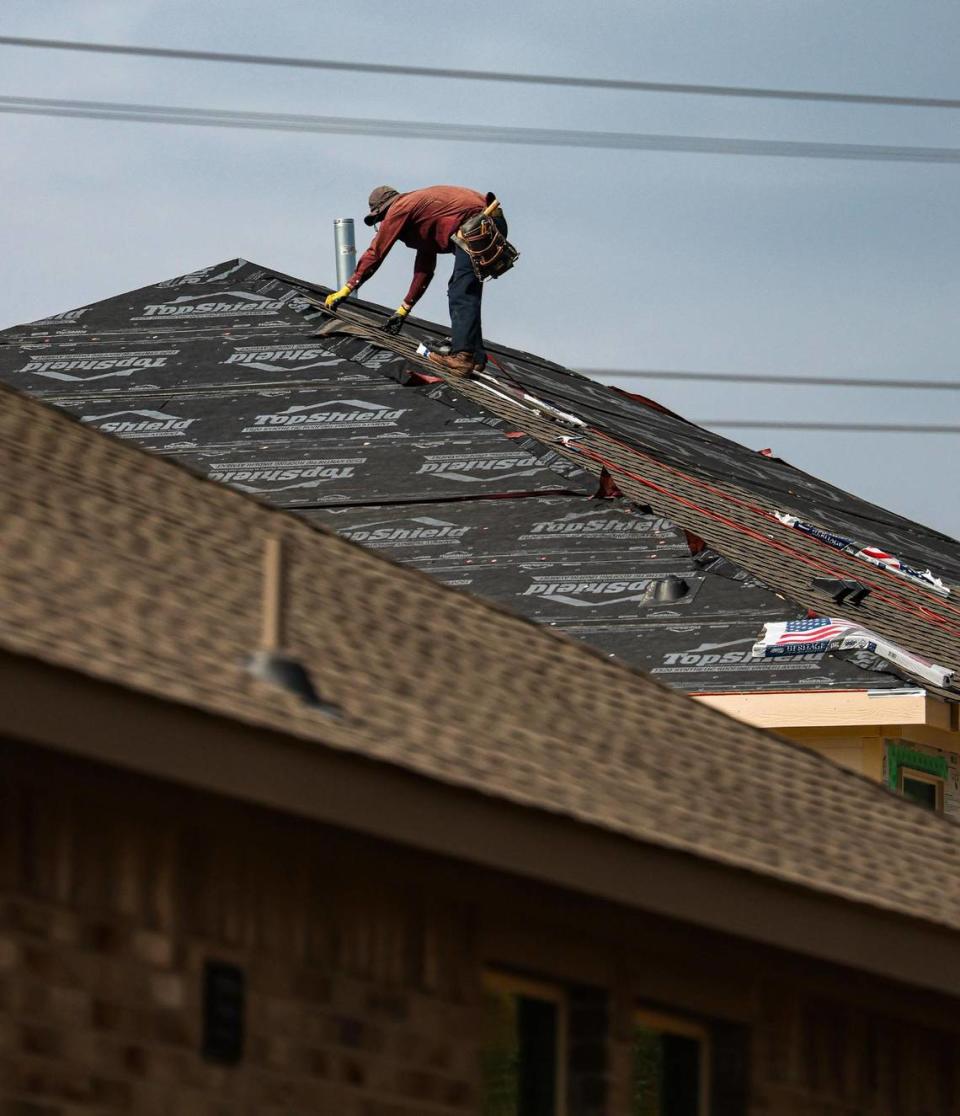
Take the Northwest school district, which includes Rhome, Justin, Roanoake and Haslet. In the past decade, enrollment has jumped by more than 23,000 students, the fastest in Dallas-Fort Worth, according to the district. Voters approved a bond proposal in May to build a high school, a middle school, four elementary schools, four early childhood centers and replace two elementary.
The community understands that growth is coming, said Tim McClure, Northwest’s assistant superintendent of facilities. He often jokes that they’re “part of the problem” because they all moved here just like he did. But, now that they’re here, they’re all ready to support the growth process.
“I have to acknowledge the fact that our community is willing to support bond elections, because if we don’t pass bond elections, we don’t have the funds available to build the construction and keep up with it,” he said at the Thursday groundbreaking ceremony for Alan and Andra Perrin Elementary School near Justin.
An opportunity for investment
New homes popping up on the edges of Dallas-Fort Worth have not been immune to rising prices.
Look at Krum, where the median home value for 2017-2020 was $208,000, according to the U.S. Census Bureau. Now, Realtor.com lists the median price of homes sold in June at nearly $385,000.
Or Celina, where homes sell for $634,000 compared to the median price of $339,400 in 2017-2021.
In Josephine, median home prices have increased by 73% from the 2017-2021 median price, as of June 2023. According to Realtor.com, median listing prices have more than doubled in Rhome since July 2020, where where 10,000 new homes are planned and you’ll see signs for new developments along Main Street.
Supply costs have increased since the pandemic and the costs that are reflected in home prices, said Allen, the past president of the Greater Fort Worth Association of Builders.
But, generally speaking, the farther you get outside the city, the cheaper the land, which translates to a lower house price, he said.
“Listings for resale homes are still incredibly low,” he said. “So anyone looking to either buy their first new home, to move up to a larger home or someone relocating to Dallas-Fort Worth, all those people have fewer options to buy in the resale market, and there’s tremendous competition for those. That obviously then creates more demand for new homes to help fill that gap.
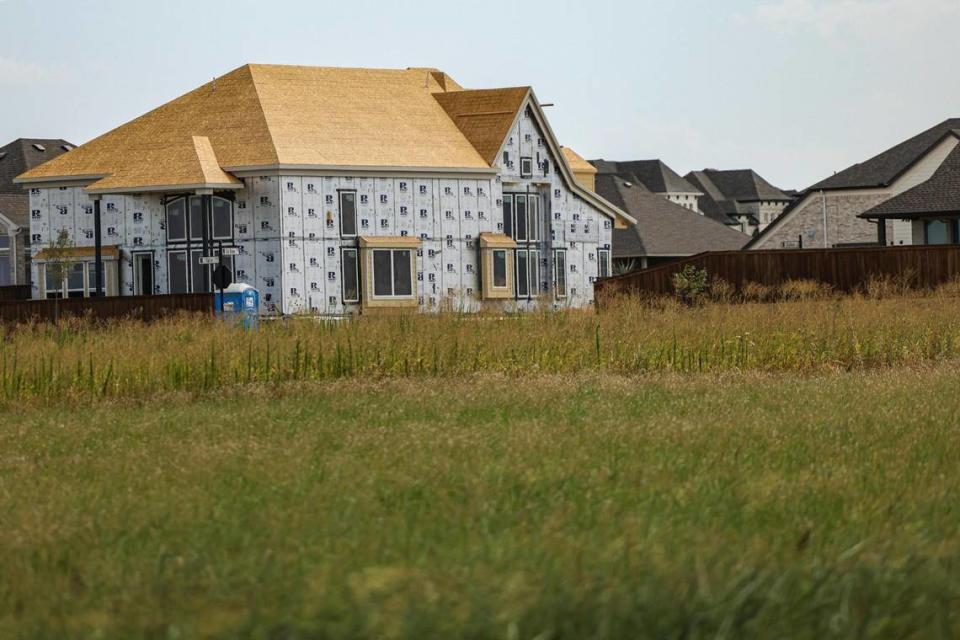
David Hray, his wife and daughter unloaded a moving truck on a Saturday in June outside their new home in a DR Horton community in Krum, about eight miles west of Denton. They looked at several options for moving, having previously lived in a Denton apartment.
As you look along U.S. 380 toward Plano and McKinney, the homes were expensive, lots packed close together and traffic bad, he said. In Krum, for a lower price, he was able to get more space.
“One of the reasons why we like Krum is because it’s kind of like country living, but we’re close to everything,” he said. “We’re real close to Denton and 380 and the mall.”
But everything north is cow and horse pastures and farmland.
“It’s just a little bit of both worlds,” Hray said.
He expects the development to keep moving north and sees an investment opportunity.
“One of the things that attracted me as an investment property would be to get in on the ground floor, and hopefully as that expansion starts coming north, we’ll be able to get as much money out of our house as we bought it for,” Hray said.
Staff Writer Micah Pearce contributed to this report.

